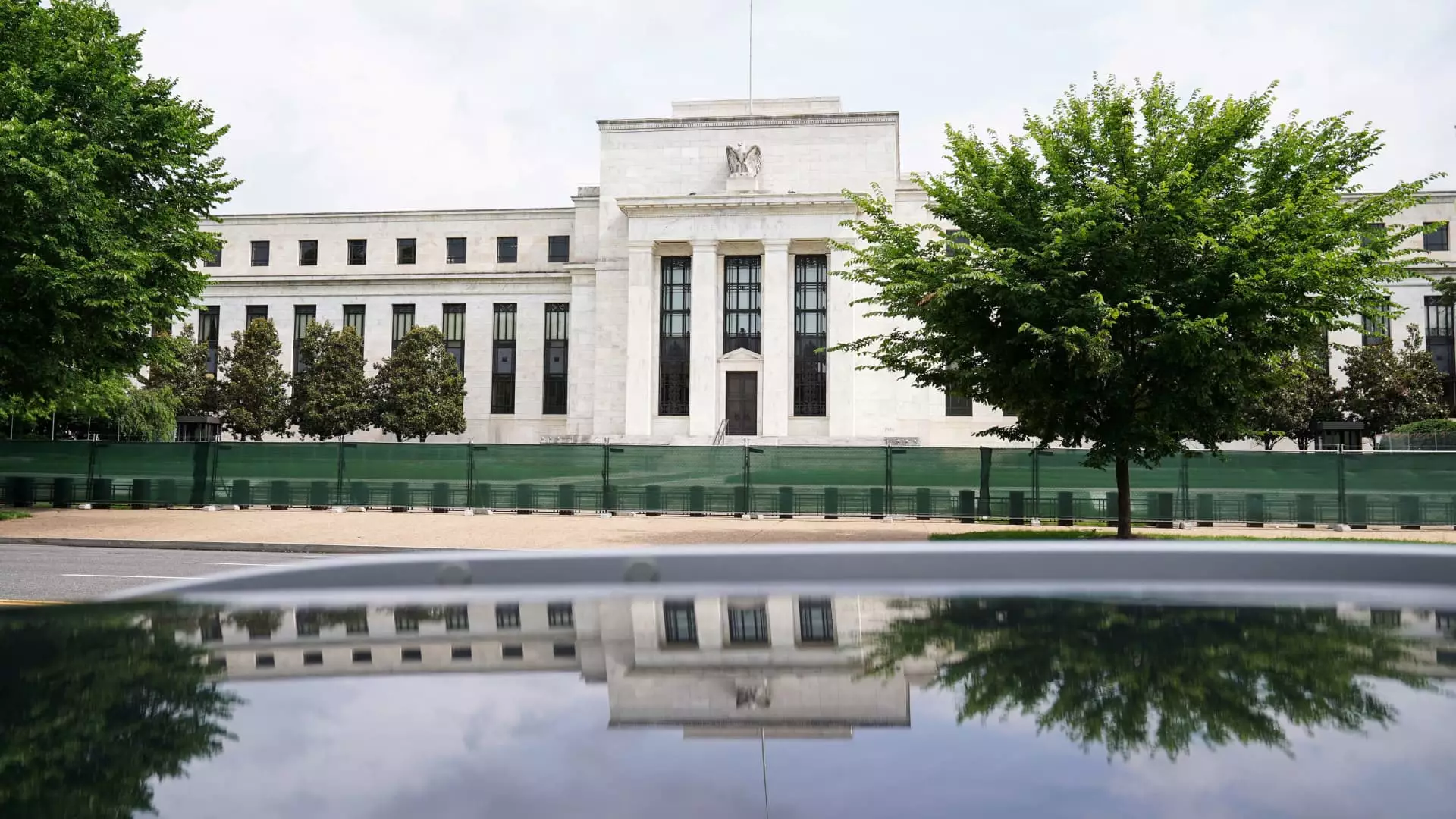The recent moderation in inflation rates has stirred discussions about potential interest rate cuts by the Federal Reserve, anticipated during its upcoming meeting. This development brings a glimmer of hope for Americans weighed down by persistent living costs and rampant interest rates. Yet, the road to financial relief remains complex and nuanced.
Understanding Inflation’s Persistence Post-COVID-19
Since the onset of the COVID-19 pandemic, inflation has not merely been a fleeting concern; it has marked a significant economic challenge. Price increases surged to a staggering 9% in mid-2022, the highest in over four decades. The Federal Reserve’s response was swift and aggressive, launching a series of interest rate hikes intended to stem this inflation tide. Consequently, the benchmark interest rate reached levels not seen in decades, which inevitably impacted borrowing costs across the board. Households found themselves in a tightening financial squeeze as they faced soaring costs for everyday goods and services, exacerbated by the overall economic climate.
Despite recent signs indicating that inflation may be easing—evidenced by a drop in the Consumer Price Index (CPI) to approximately 2.5% from its peak—many experts caution against expecting immediate gratification from an interest rate cut. Brett House, an economics professor at Columbia Business School, highlights that while consumers can find solace in a potential rate reduction, it won’t be a cure-all.
The Federal Reserve is expected to announce an interest rate reduction of around a quarter percentage point at its next meeting. However, seasoned economists like Greg McBride, chief financial analyst at Bankrate.com, emphasize that this initial cut will have a minimal impact on the average borrower. The expectation is that a series of future reductions will cumulatively yield more significant relief, but the immediate effects of a single rate adjustment should not be overstated.
Markets are currently pricing in a strong likelihood of these rate cuts, with predictive measures indicating that the Fed’s benchmark rate could fall below 4% by the end of 2025. This trajectory implies ongoing adjustments, but the reality is that past borrowing expenses have already ascended to unprecedented heights due to previous rate rises. As a consequence, the anticipated rate cuts will first provide incremental improvements rather than sweeping changes.
Impact on Various Types of Borrowing
One of the most immediate areas of concern for consumers is credit card debt, which has become a significant financial burden for many. The average credit card rate soared from 16.34% in March 2022 to beyond 20%—an unprecedented rise. Current projections suggest that as the Fed begins to cut rates, these interest rates will gradually decline. However, McBride warns that consumers should not rely solely on rate cuts for relief. Switching to a zero percent balance transfer credit card and prioritizing debt repayment might prove far more beneficial than waiting for rates to drop.
Mortgage rates, which while typically fixed for 15- or 30-year loans, are also influenced by changes in the Fed’s policies. Recently, these rates have shown signs of decreasing, attributed to the anticipation of a potential economic slowdown. Yet, even as mortgage rates fall, home prices remain inflated, complicating the landscape for prospective homebuyers. Jacob Channel, a senior economist, clarifies that while lower mortgage rates may seem advantageous, the reality of high housing prices will continue to present challenges for many first-time buyers.
Beyond credit card and mortgage impacts, auto loans and student loans illustrate the far-reaching implications of shifting interest rates. The average rate on a five-year new car loan is currently around 7.7%. While rate cuts might lead to lower rates in the future, experts stress that a quarter-point decrease will not radically alter the financial landscape for auto buyers. Incremental changes are anticipated, suggesting consumers should focus on enhancing their credit scores to secure the most favorable loan terms.
In recent years, federal student loan rates held relatively steady, so direct impacts from a rate cut may not be as pronounced. However, those with variable-rate private loans will start to benefit sooner from any adjustments made by the Fed. Refinancing could lead to lower costs, but potential borrowers must navigate the inherent risks of sacrificing benefits that come with federal loans.
While the prospect of interest rate cuts might offer a glimmer of hope amidst ongoing economic challenges, consumers should approach this news with a discerning eye. The relationship between Fed action and tangible benefits for borrowers is complex and often fluid. For many Americans, improving their financial situations will require a more proactive approach, focusing on managing debt and enhancing credit scores rather than relying solely on favorable shifts in monetary policy. As the economic landscape continues to evolve, individuals must remain vigilant and strategic in their financial planning.

